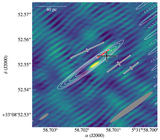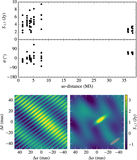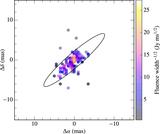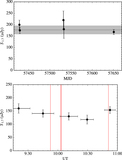Image Details
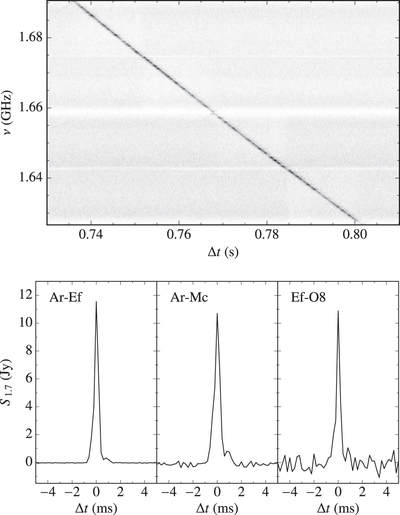
Caption: Figure 2.
Top: dynamic spectrum of the strongest burst detected on 2016 September 20 (burst #2 in Table 1) from Arecibo autocorrelations, showing the dispersive sweep across the observing band. Bottom: coherently dedispersed and band-integrated profiles of the same burst as observed in the cross-correlations for Arecibo–Effelsberg (Ar-Ef), Arecibo–Medicina (Ar-Mc), and Effelsberg–Onsala (Ef-O8) after only applying a priori calibration. The measured peak brightnesses are 11.9, 10.7, and 10.9 Jy, respectively, where the error is typically 10%–20% for a priori calibration. The rms on each baseline is 12, 80, and 300 mJy, respectively.
Copyright and Terms & Conditions
© 2017. The American Astronomical Society. All rights reserved.


